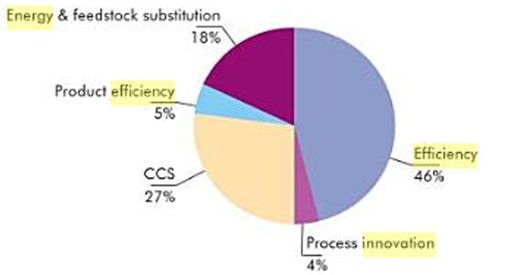Overview
Energy resources are mainly utilized for residential, commercial, and industrial purposes. The speaker argued that implementing energy efficiency can serve 85% of load growth over the next twenty years. Similarly, energy efficiency was defined as a decrease in energy intensity, as a result of behavior change. Generally, energy efficiency reduces the overall energy consumption without decreasing comfort, utility, output, or value.
Energy efficiency is an ongoing process with three main strategies being employed; short-term, mid-term, and long-term. Programs and measures, market incentives, setting new policies, identification of new technologies, and innovation of new technologies are some strategies utilized to promote energy efficiency. Furthermore, some non-programmatic energy-saving techniques are utilized.
Besides, there are international energy priorities namely energy security, necessary for economic development, economic competitiveness, and climate change. In addition, through energy efficiency, the president notes that the country can create job opportunities and combat climate change.
Justification for energy efficiency
It is projected that 85% of the load growth of energy will be met through energy efficiency. The speaker noted that half of PNW load growth since 1980 was met by energy efficiency resources. Indeed energy efficiency is a proven approach since in 2009, nationally, energy efficiency accounted for 1% of electricity resources. Similarly, regionally energy efficiency accounted for 12%of, electricity resources. Furthermore, the utility cost of conservation has considerably decreased over the years. In 2009 the utility cost of conservation was slightly over $1/aMW.
Essentially, the community benefits through the improvement of the local economy with local labor. Moreover, it provides utility benefits by eliminating tier II. Furthermore, energy efficiency creates personal benefits as it helps consumers to save. Particularly, consumer savings equaled $2.3 billion in 2009.
Energy Efficiency Targets
Furthermore, regionally, they have managed to exceed the 5th Plan’s Targets and the 6th Plan Resource Portfolio has been created which project s saving of 1,220 aMW over the next five years. Basically, the public power share of the regional energy efficiency target is 504 aMW in the years 2010-2014.
Energy efficiency is particularly important theme when dealing with technology innovation. Essentially, governments and the market require new innovations which are energy efficient. Furthermore, government is more likely to fund research for innovation which are energy efficient and with less impact on the climate (House of Commons: Science and technology Committee, 2011). Energy intensity, energy consumption per unit GDP influences economic growth and competitiveness. Moreover, new technologies and innovations should account for energy efficiency and newer forms of energies.
Additionally, increase in the price of energy has induced technological new innovation in energy efficiency (Philips, 2007, p.38). However, focus on cost reduction innovations may result in misdirection of energy. On the same breath, demand for energy have increased therefore technology which promotes energy efficiency is required.
Moreover, energy efficiency in innovation has the following important roles; aids in accomplishing a task with less energy, producing products of higher value using same amount of energy or less. Similarly, innovation activities that aim to increase yield, reduce wastage, optimize performance, and reduce material content also improve energy efficiency.
Furthermore, improving energy efficiency helps to combat adverse effects in the environment. Essentially, energy efficiency is more cost efficient in reduction of industrial CO2 emission. Therefore, technologies and innovation have to incorporate energy efficiency in order to combat climate change. Moreover, there is international pressure for countries to enforce policies that promote climate sustainability. The graph below illustrates that energy efficiency have the highest contribution in reduction of industrial emission.

References
Great Britain: Parliament: House of Commons: Science and Technology Committee, (2011).Technology and Innovation Centres: Report, Together with Formal Minutes, Oral and Written Evidence. London: The Stationery Office.
International Energy Agency, (2006). Energy Technology Perspectives: Scenarios & Strategies to 2050: In Support of the G8 Action Plan. Paris: OECD Publishing.
Philips, P., (2007). Governing Transformative Technological Innovation: Who is in Charge? Cheltenham: Edward Elgar Publishing.
